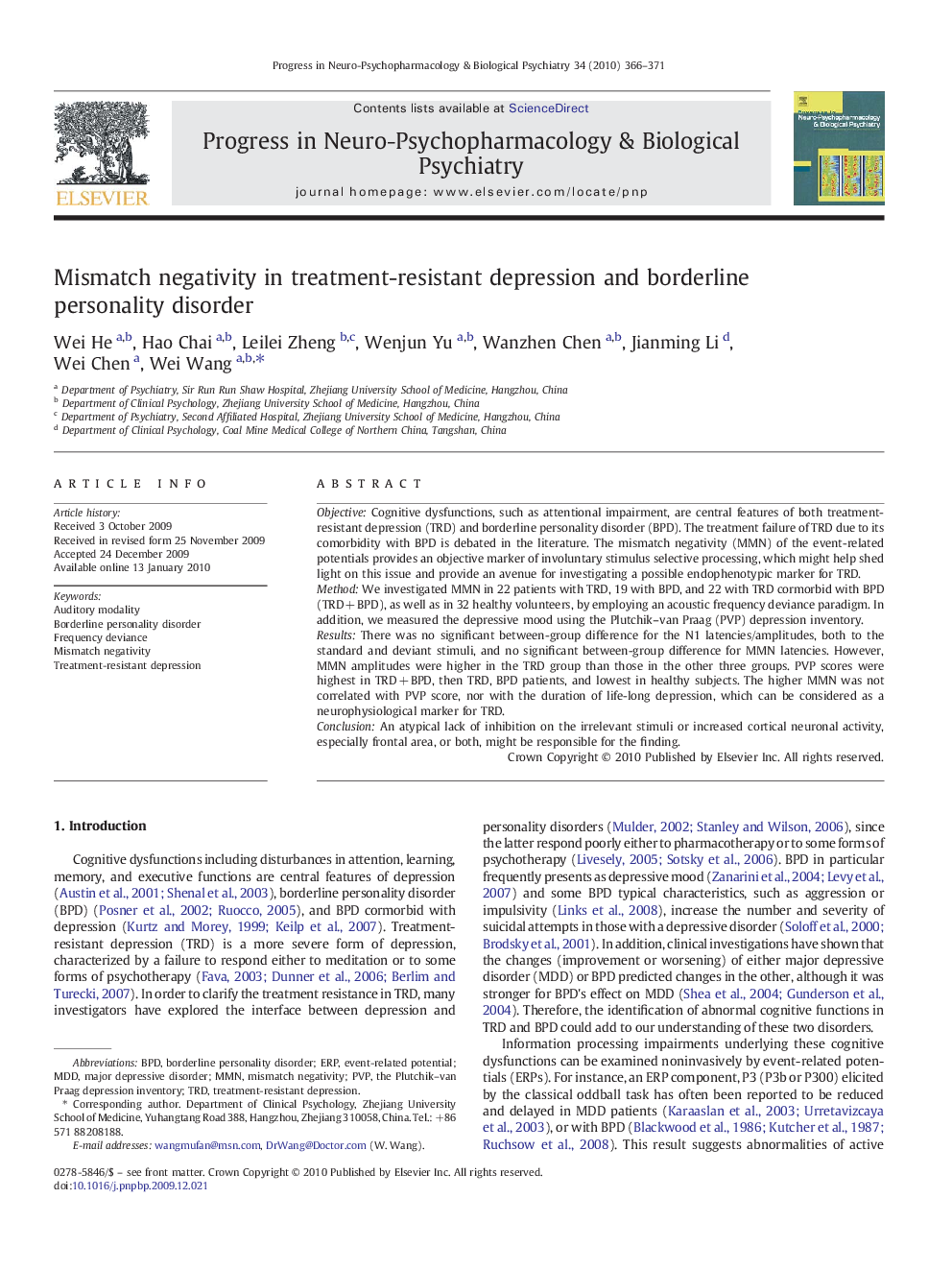| Article ID | Journal | Published Year | Pages | File Type |
|---|---|---|---|---|
| 2565574 | Progress in Neuro-Psychopharmacology and Biological Psychiatry | 2010 | 6 Pages |
ObjectiveCognitive dysfunctions, such as attentional impairment, are central features of both treatment-resistant depression (TRD) and borderline personality disorder (BPD). The treatment failure of TRD due to its comorbidity with BPD is debated in the literature. The mismatch negativity (MMN) of the event-related potentials provides an objective marker of involuntary stimulus selective processing, which might help shed light on this issue and provide an avenue for investigating a possible endophenotypic marker for TRD.MethodWe investigated MMN in 22 patients with TRD, 19 with BPD, and 22 with TRD cormorbid with BPD (TRD + BPD), as well as in 32 healthy volunteers, by employing an acoustic frequency deviance paradigm. In addition, we measured the depressive mood using the Plutchik–van Praag (PVP) depression inventory.ResultsThere was no significant between-group difference for the N1 latencies/amplitudes, both to the standard and deviant stimuli, and no significant between-group difference for MMN latencies. However, MMN amplitudes were higher in the TRD group than those in the other three groups. PVP scores were highest in TRD + BPD, then TRD, BPD patients, and lowest in healthy subjects. The higher MMN was not correlated with PVP score, nor with the duration of life-long depression, which can be considered as a neurophysiological marker for TRD.ConclusionAn atypical lack of inhibition on the irrelevant stimuli or increased cortical neuronal activity, especially frontal area, or both, might be responsible for the finding.
